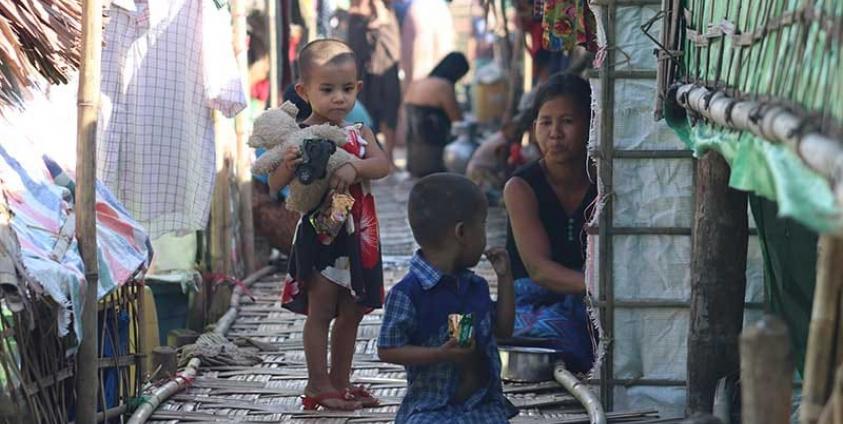Myanmar’s military regime is updating a list of internally displaced people (IDPs) who wish to return home in Mrauk-U Township, Arakan State.
Two days after a temporary truce between the Myanmar military and the Arakan Army (AA) on November 26, Mrauk-U Township General Administration Department officials phoned managers of displacement camps and asked them if IDPs there who had registered for return would now go back to their homes.
IDPs at displacement camps in Mrauk-U registered to return following the previous ceasefire, reached ahead of Myanmar’s November 2020 general election. But for a variety of reasons, many have been unwilling or unable to return since then.“They said IDPs who have previously registered can go back to their homes now,” said camp manager U Kyaw Maung of Pyar Hla IDP camp. “Some IDPs want to return on condition that they receive food supplies and some allowances. A total of 236 people from 54 households in our camp plan to return.”
He added: “IDPs here said they may not be able to return unless the regime provides allowances and rice supplies. It has supplied nothing. And it is not yet clear when they can go back.”
There are a total of 1,667 people taking shelter at Pyar Hla IDP camp, and most of the 236 people wishing to return home are from Auk Thar Kan, Pauk Taw Pyin and other villages in Mrauk-U. Many want to return because of financial hardships at the camp.
Mrauk-U Township General Administration Department officials also phoned Wet Hla IDP camp on December 1.
“The administrator asked if households that have registered for return would go back to their home if they were provided with K500,00 [per household],” said camp manager U San Nyunt of Wet Hla IDP camp. “Sixty-eight people from 11 households have registered to return. At the previous meetings, authorities said they would provide K500,000 and two months of rice [for returnees], so IDPs would not return unless they get the supplies.”
Some 1,000 villagers from Phayagyi, Auk Thar Kan, Lekka and other villages are taking shelter at Wet Hla camp.
However, junta officials have not yet phoned some of the most populous camps in Mrauk-U Township, including Tein Nyo, Mya Tazaung, and Myo Oo Khaung, to discuss the return of IDPs, according to camp managers.
Some IDPs say they can’t return home yet because there are no guarantees for their safety and there are few sources of livelihood available back in their villages. The risk of landmines also weighs heavily on the minds of many villagers.
“The dream of IDPs is to return to their home,” said Mya Tazaung Sayadaw, the abbot of Mya Tazaung Monastery, which provides shelter for IDPs. “But there is guarantee for their safety, and landmines have not yet been cleared. And what are they supposed to do to make a living when they return to their homes? These are the barriers that prevent IDPs from returning home.”
DMG was unable to reach Arakan State Administration Council spokesman U Hla Thein forcomment on how the regime is arranging for the return of IDPs.
U Hla Thein was quoted in a BBC report saying some 1,200 families registered to return to their homes in Mrauk-U District after the previous ceasefire, and that the regime is updating the list now.
The number of IDPs at displacement camps stood at more than 90,000, according to an October report from the United Nations Office for the Coordination of Humanitarian Affairs.They included more than 16,000 people newly displaced in Arakan State and neighbouring Chin State’s Paletwa Township since fighting between the military and Arakan Army flared anew in August, and those who were displaced by the previous fighting between late 2018 and 2020 and are still unable to return to their homes.








